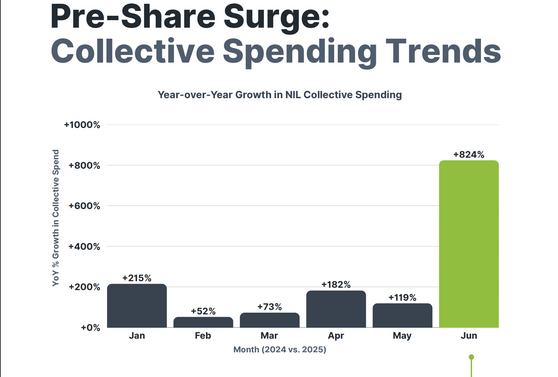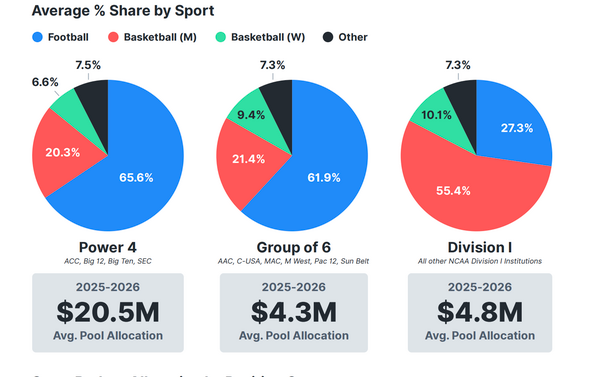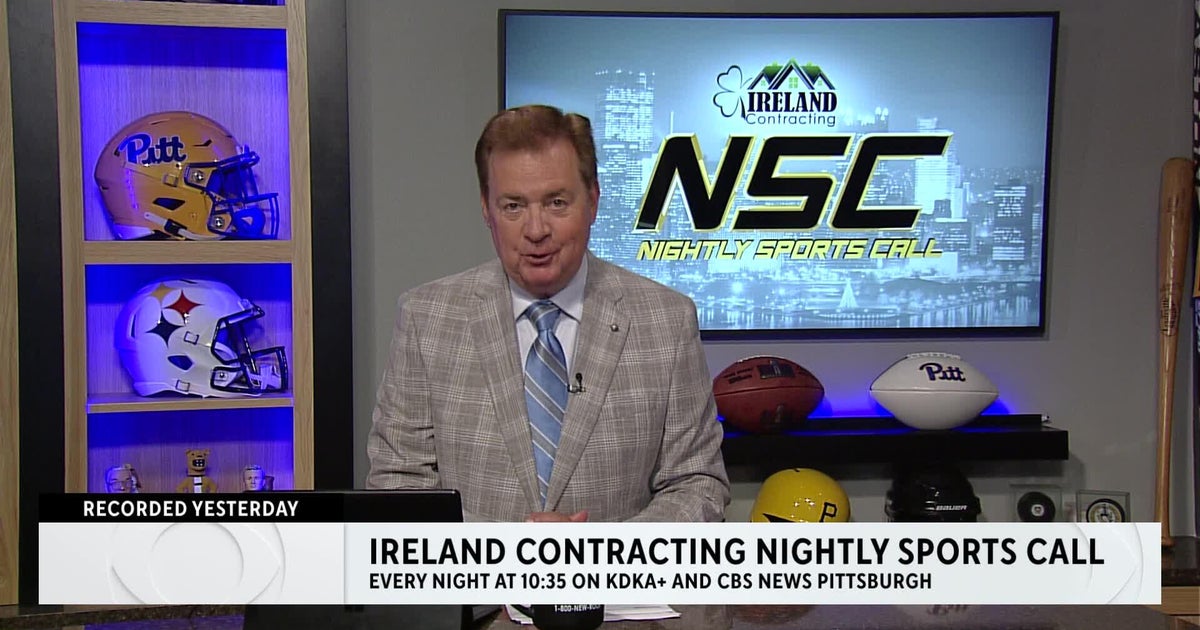The revenue-share era is finally here as schools are legally able to pay their athletes directly beginning on July 1 on the heels of the landmark House v. NCAA settlement. A historic moment like this requires both retrospection and projection on where we've been and where we are headed in college sports. Thankfully, Opendorse published its annual report Tuesday that had a treasure trove of NIL and revenue share data that offers good perspective in both areas.
Here are three takeaways from Opendorse's data release:
The front-loading boom was real
CBS Sports has extensively detailed the impact of "front-loading" contracts with NIL money ahead of the revenue sharing era beginning. Anecdotally, it had an especially big impact on the quarterback market with the top end surpassing the $4 million annual number. Coaches like Indiana's Curt Cignetti have told CBS Sports the combination of NIL front-loading and rev share money has pushed the top rosters into the $40 million range.
How athletes will be paid as July 1 ushers in new era for college sports: NIL changes, enforcement, contracts
Shehan Jeyarajah

Opendorse's data shows the front-load boom was real, and the numbers are staggering. In June alone, NIL collectives spent 824% more than they did a year ago. There were other big booms in January (215% up YOY) and April (182% up YOY) timed around transfer portal windows.
Texas Tech, as CBS Sports' Shehan Jeyarajah recently detailed, is believed to have been the most aggressive in capitalizing on what could be the last unregulated era of college football. The Red Raiders loaded up on transfer portal talent, including Stanford edge rusher David Bailey, Georgia Tech edge rusher Romello Height and UNC offensive tackle Howard Sampson.
"It's a moment in time and an opportunity that may not exist again in the next decade," Texas Tech AD Kirby Hocutt told CBS Sports. "It's an opportunity to go all in."
In total, collectives spent more than $1.3 billion on NIL payments, according to the data.

Where is the money going?
Good, real data has been so hard to come by in the NIL era. There are so many incentives to either inflate or downplay numbers depending on what side you're on; it can be hard to have a good read on what's real or not.
But the annual report offered some interesting data on how programs have been deploying NIL money in the pre-rev share era. Some of it is pretty self-explanatory -- quarterbacks, of course, are the highest paid in football -- but there were some surprises along the way, too. It's particularly interesting to see the spending on guards in men's basketball (53.2%) is nearly identical to what women's basketball spends on centers (52.6%).
In football, we've seen college programs follow the NFL model of deemphasizing spending on running backs (second-lowest spending position behind only tight ends) and instead prioritizing wide receivers and the offensive line. It's just a snapshot so your favorite team could have a different spending strategy, but it gives you a general sense of how your team's roster may have been constructed.

Where is it headed?
Now that revenue sharing is legal, one of the more fascinating components will be how athletic departments divvy up the money. CBS Sports has previously written about how that can be a particularly challenging job for athletic directors who need to prioritize multiple sports.
As Duke AD Nina King previously told CBS Sports, all three of her prominent sports -- football, men's and women's basketball -- "asked me for a lot more than we can provide for them."
So what did Duke do? "They all three didn't get what they wanted," King said.
King isn't alone in that dilemma, but at the end of the day, every AD will have to make a decision on how that $20.5 million pot is split up.
Based on Opendorse's data, it says the average Power Four spending breakdown will be: 65.6% for football, 20.3% for men's basketball, 6.6% for women's basketball and 7.5% for other sports which can include baseball, softball and women's volleyball, among others.
Those football numbers are especially interesting given many Power Four ADs have told CBS Sports they expect the football number to be 75% or higher.

With this new era also comes the NIL clearinghouse called NIL Go, which will review NIL deals that are $600 or more and determine if they fall in a fair market value range or not. The general consensus has been this will have a big impact on pay-for-play deals disguised as NIL and why so many rushed to do front-loaded deals.
Opendorse expects the NIL money from collectives to drop from $1.3 billion in 2024-25 down to $227.3 million in 2025-26 and all the way down to $77.9 million by 2028-29. A more than $1 billion drop in a single year is stunning, albeit offset by the new influx of money coming from schools able to directly pay their athletes. It's why Opendorse still expects total compensation to increase moving forward.
With collective money significantly decreasing, it will be critically important for schools and their marketing arms to be able to drum up true NIL money for their athletes. It'll pale in comparison to what juiced the recent transfer portal windows, but it will be the only way for schools to add money on top of that $20.5 million figure assuming the NIL clearinghouse holds up to any legal challenges.







 English (US) ·
English (US) ·